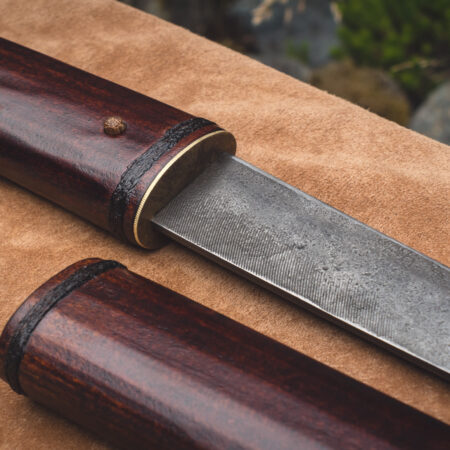Description
The core of this project is a charcoal-forged blade, water quenched with clay and sharpened with waterstones, an outdoor knife that has the foundation of the Japanese sword. The satoyama style blade is ready to be mounted as an outdoor knife in takedown style.
Satoyama are the managed forest areas that border the cultivated fields and the mountain wilds in Japan. Historically they provided soil nutrients, firewood, edible plants, mushrooms, fish, and game, and supported many local industries and crafts such as farming, timber construction, and charcoal making. The interaction of forest, arable land, wetlands, and streams are an important component of the satoyama landscape.
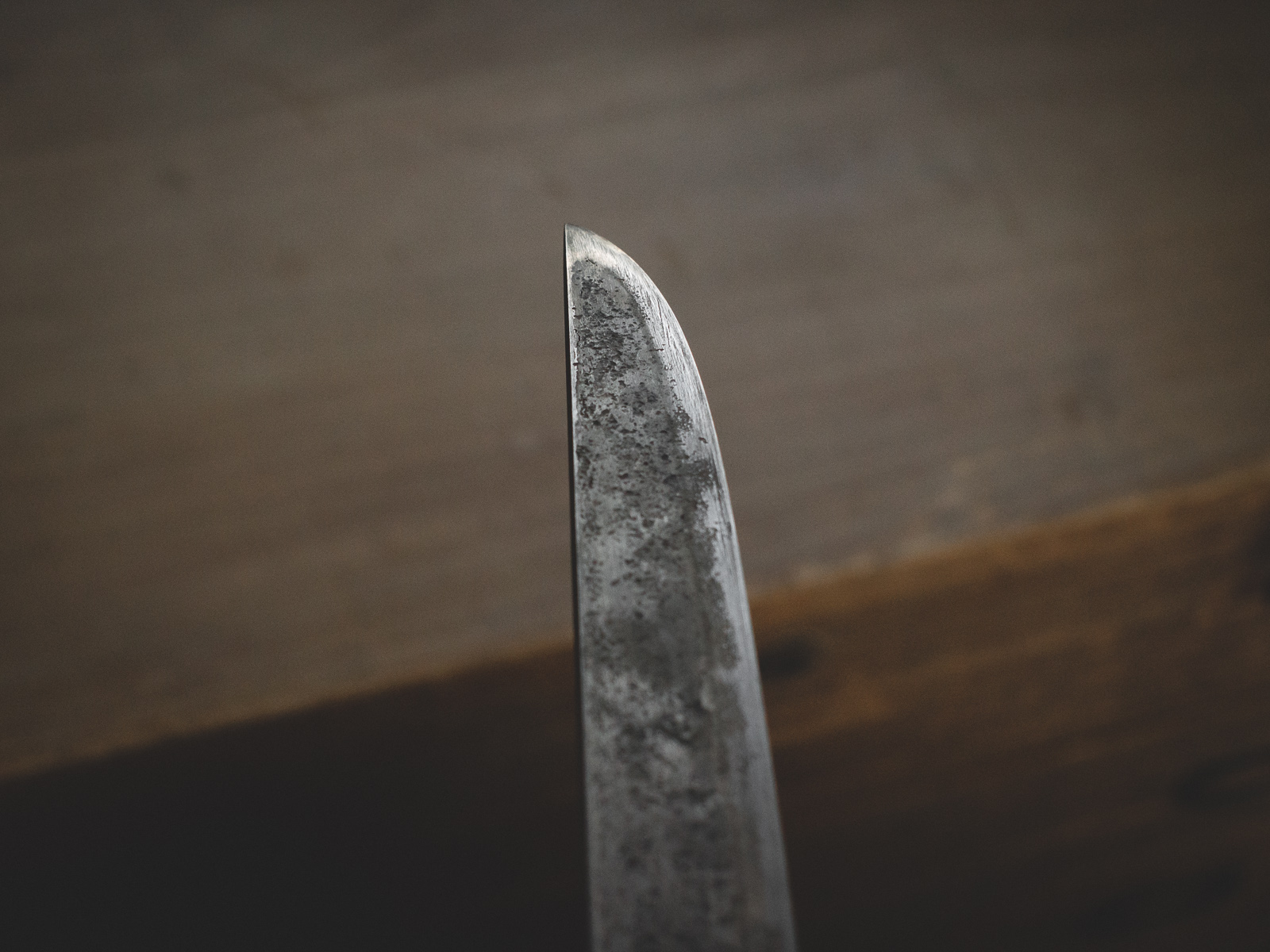
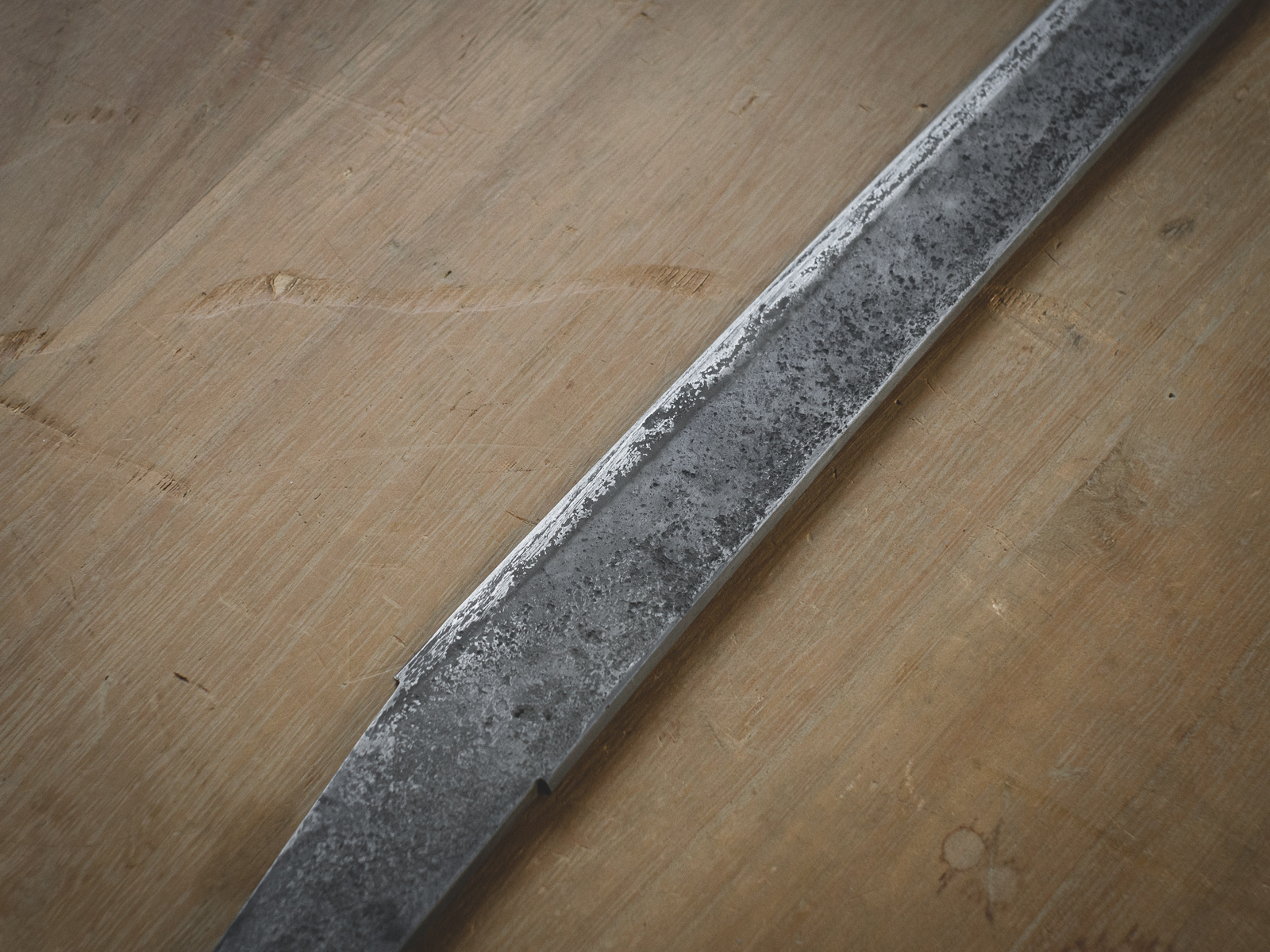
Forged from a reclaimed cultivator tine, the tapering blade proportions of this tanto are a slightly scaled up interpretation of a famous national treasure tanto known as the kenshinkagematsu. It has a small amount of graceful koshizori, and the edge temper of this high carbon steel blade has been left relatively hard as it would be in a classical sword.
The tang is constructed in a similar manner to a Japanese sword requiring only a single bamboo peg to hold the knife assembly together. In addition to the sense of beautiful simplicity, this design allows the knife to be taken apart for cleaning, sharpening, or even handle replacement.
The iaido habaki (not pictured) is non-traditionally made (cast) but functional (ductile) brass and could use some filing on the cheeks/sides in a couple of places but fits as-is.
The blade is just under 12.25″ long with an overall length of 16 3/8″. The spine at the munemachi is about 6mm thick. The edge has been taken down to around 1/2mm but still needs a final sharpening. The unhardened tang is not yet drilled, the general location can be marked if requested.
Specifications
長さ/刃長 Nagasa (blade length): 310mm (10.2sun)
重ね/元重 Motokasane (spine thickness): 6mm
元幅 Motohaba (blade width): 30mm
反り Sori (curve): 2mm, slight koshizori
中心/茎 Nakago (tang length): 107mm
柄長 Tsuka (handle length): none (should be ~11-13cm)
拵全長 Koshirae (overall): none (should be ~48-52cm)
形 Katachi (geometry): hira-zukuri, iori-mune
刃文 Hamon (edge pattern): suguha (with mizukage)
帽子/鋩子 Boshi (tip pattern): ko-maru
中心/茎 Nakago (tang): futsu, kuri-jiri, no mekugi-ana
銘 Mei (signature): mumei (unsigned)
拵 Koshirae (mounting): none
Materials: vintage cultivator tine steel, Showa era brass habaki
This piece is in a private collection in Hawaii.
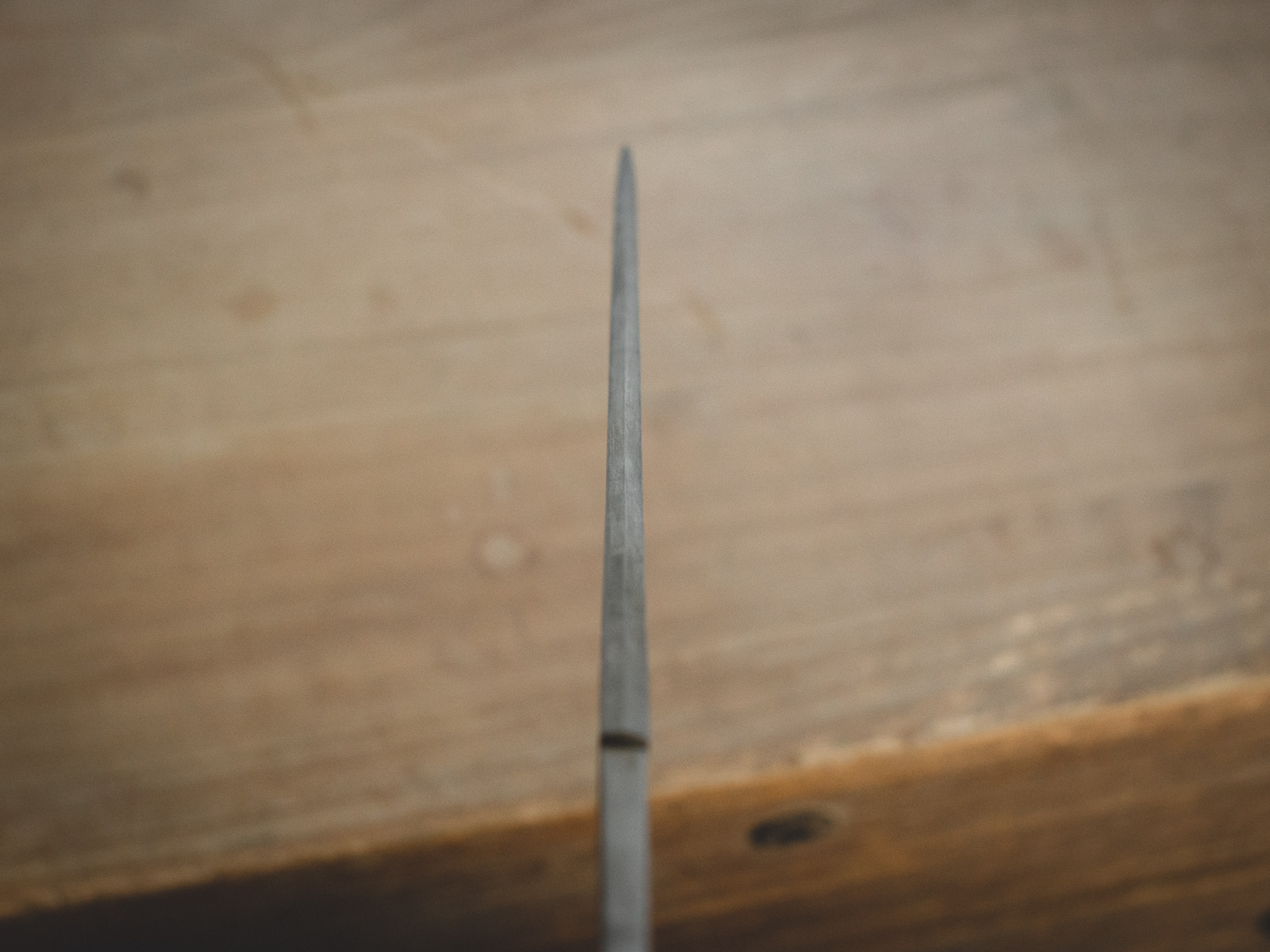
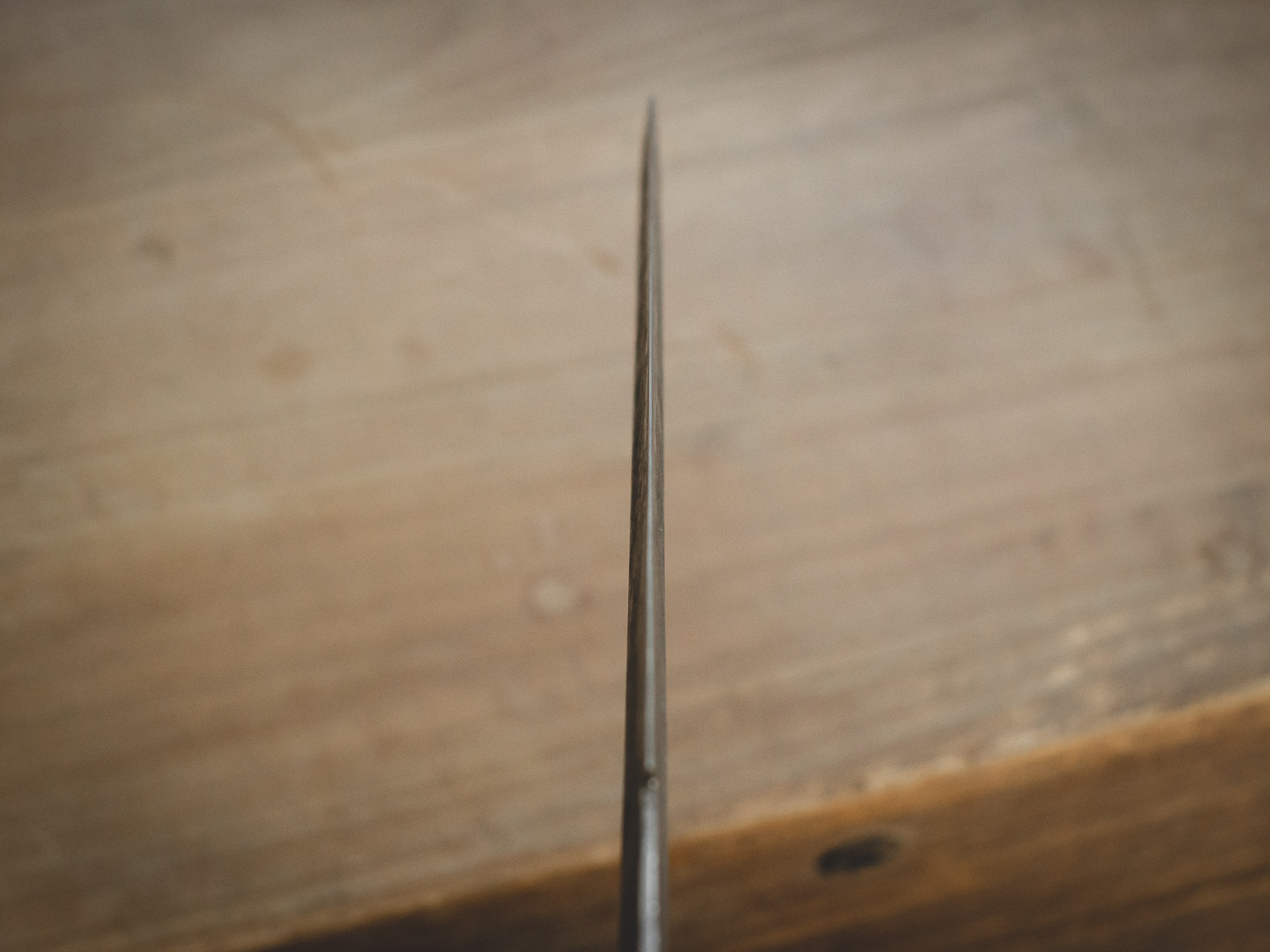
Process
This blade was forged and underwent yaki-ire at the museum forge. It began as a pre-1960s (integral) cultivator tine used by a farmer a generation or more ago.
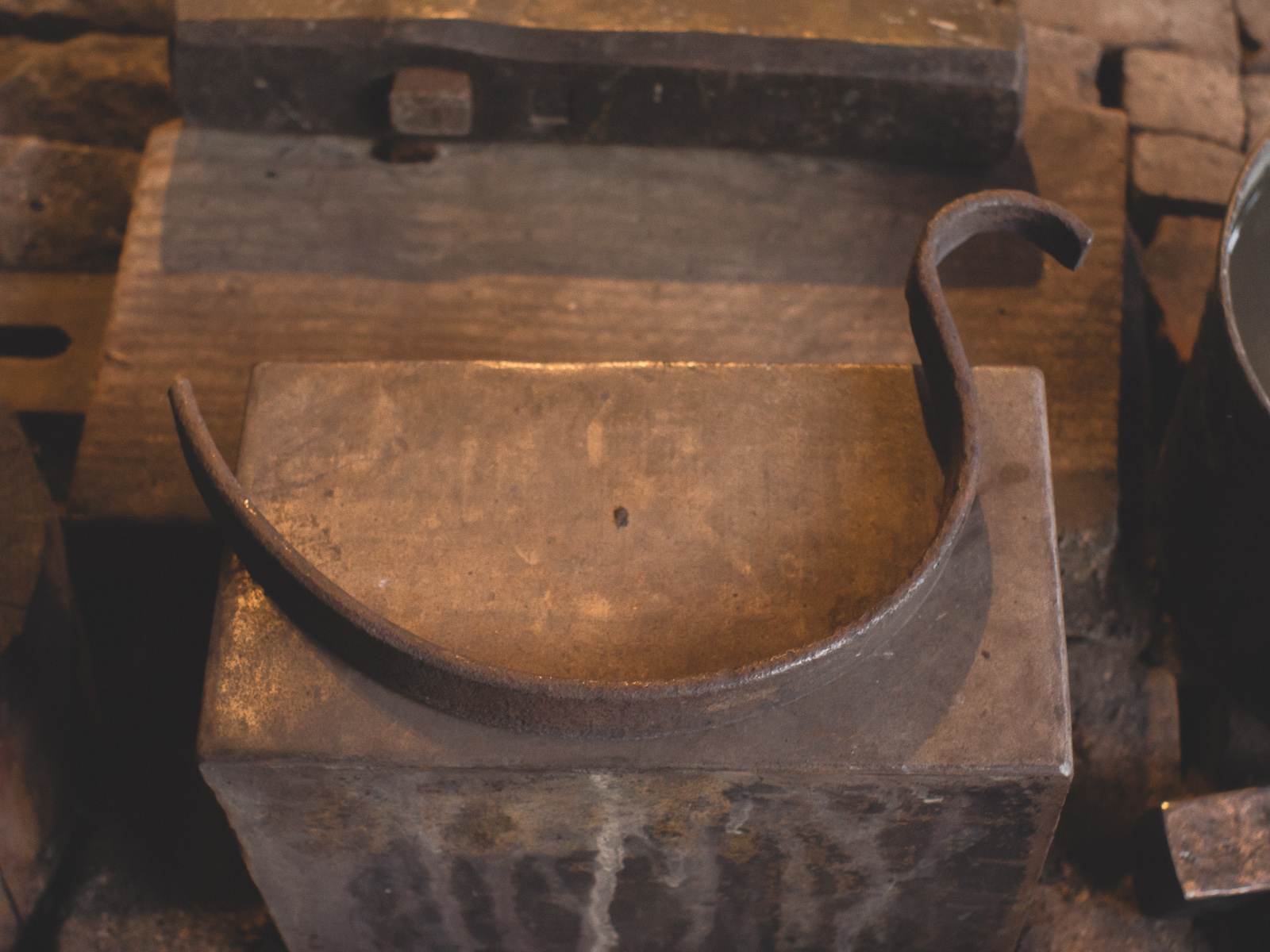
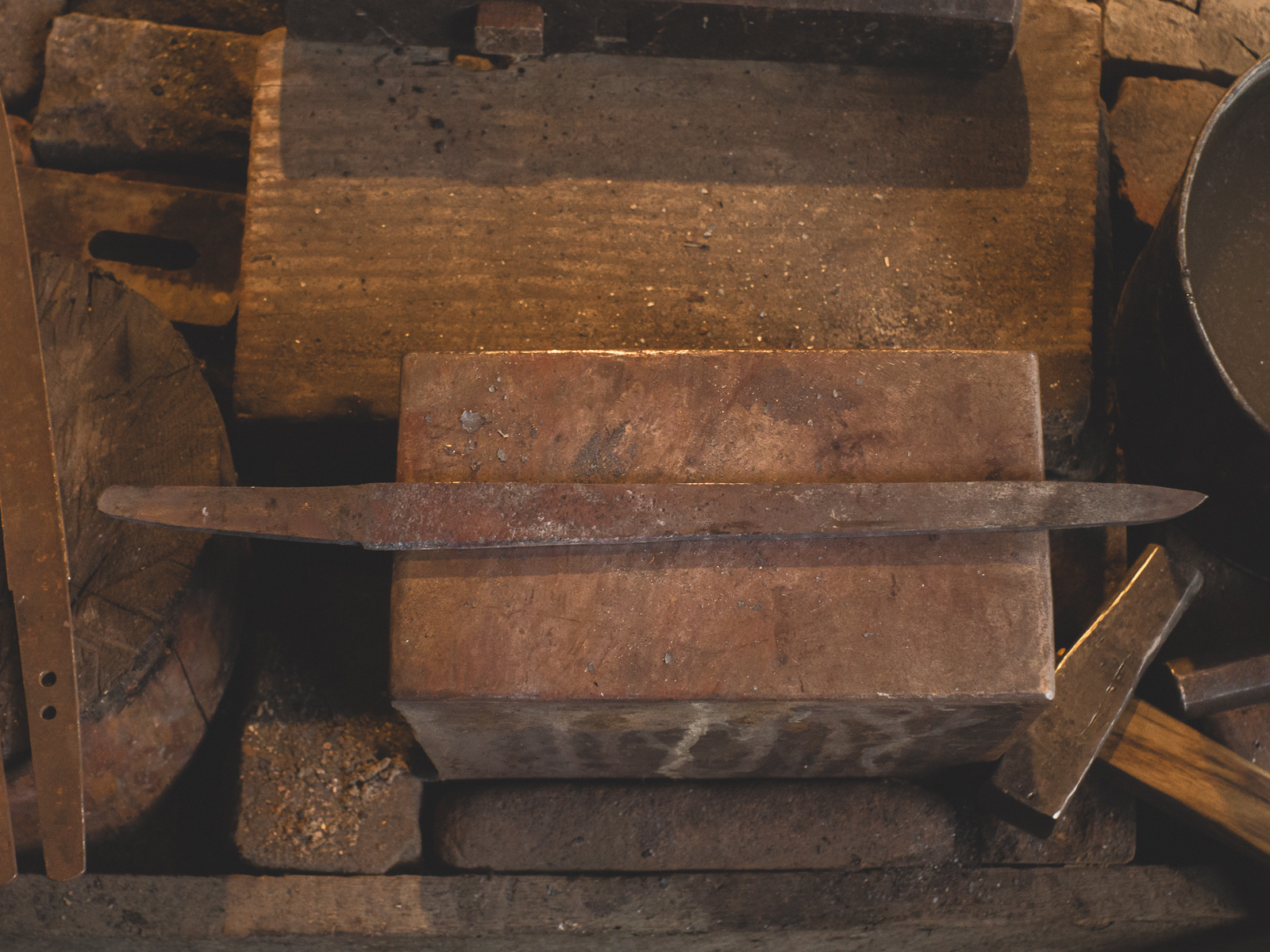
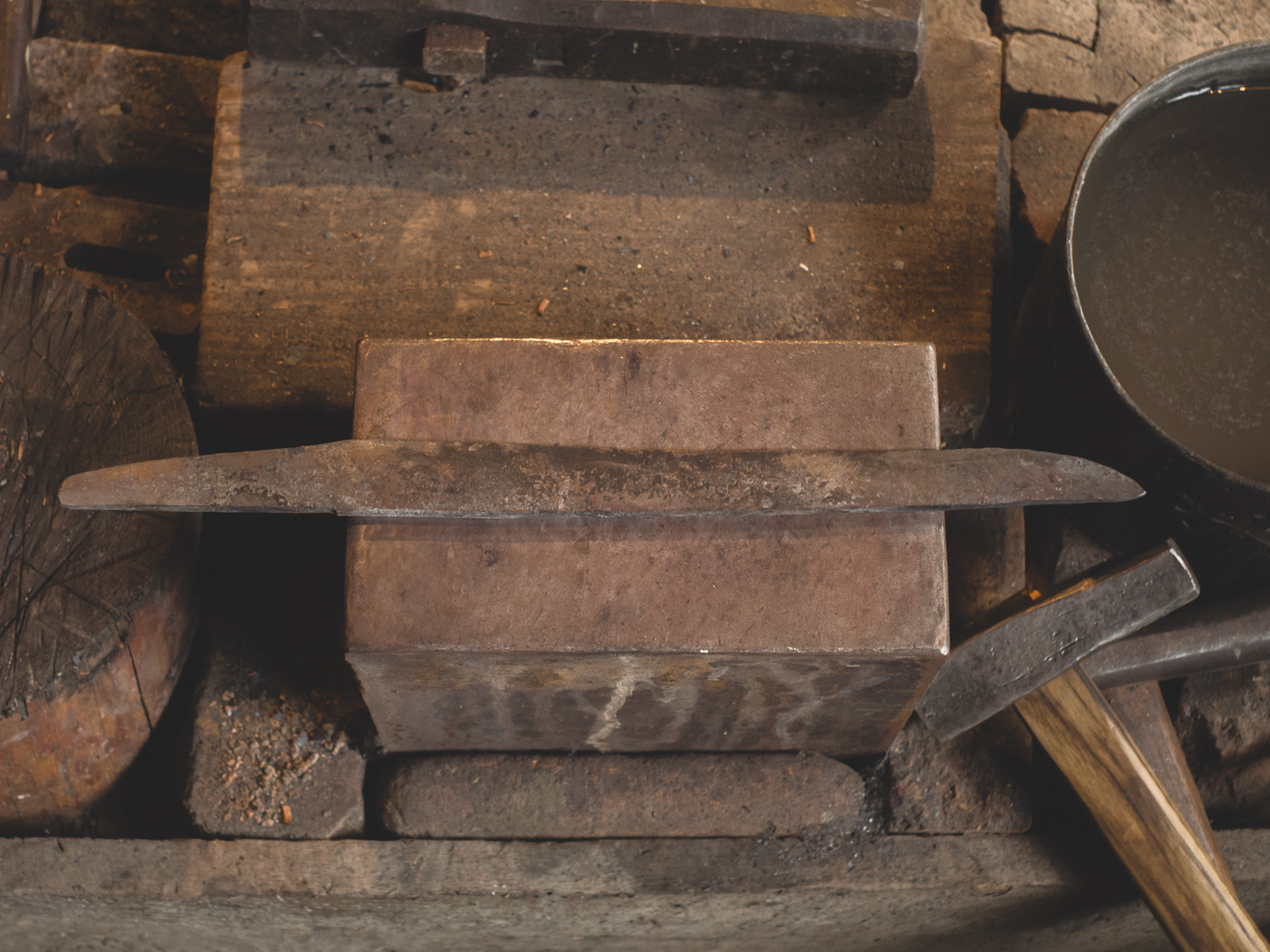
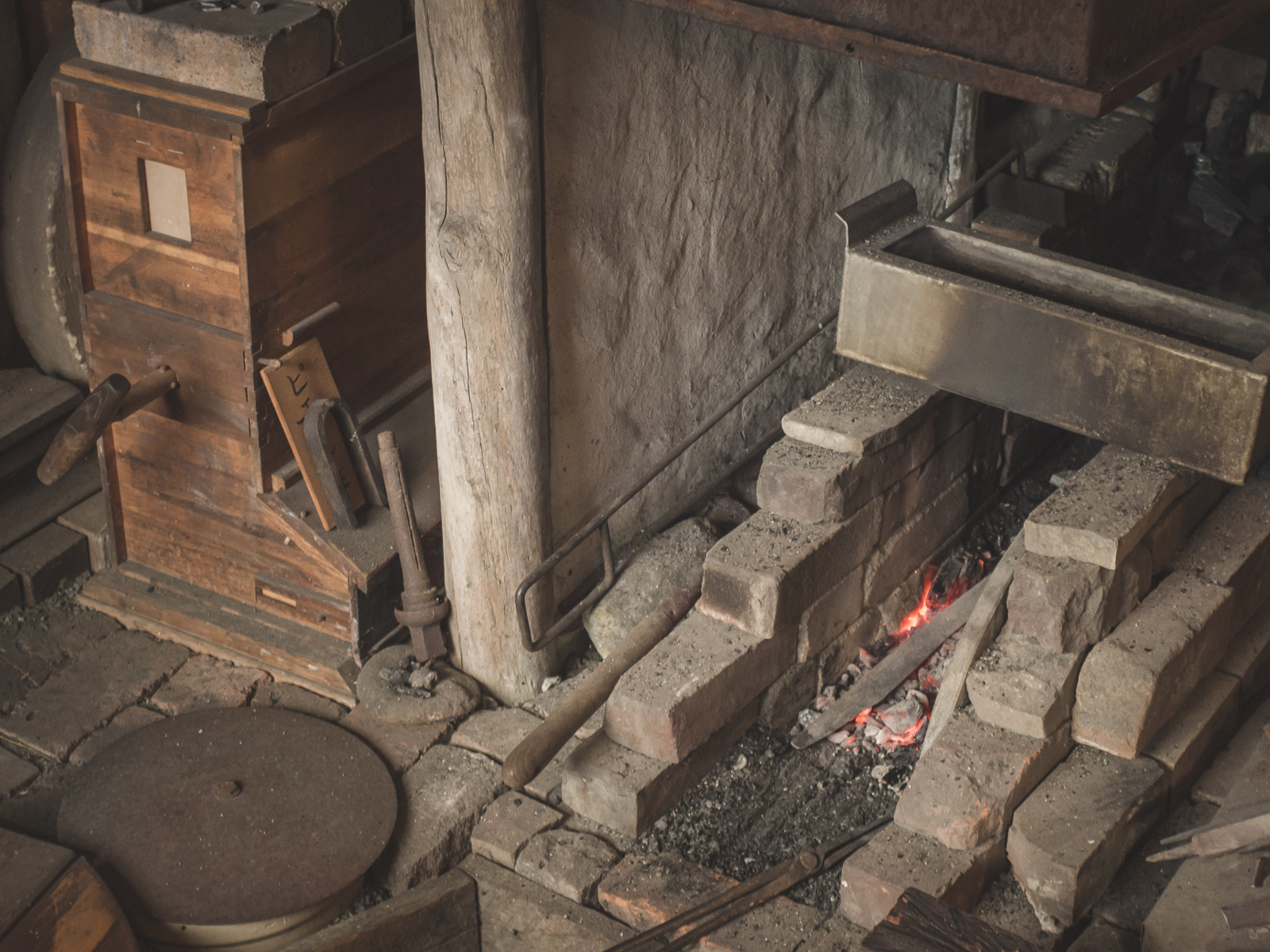
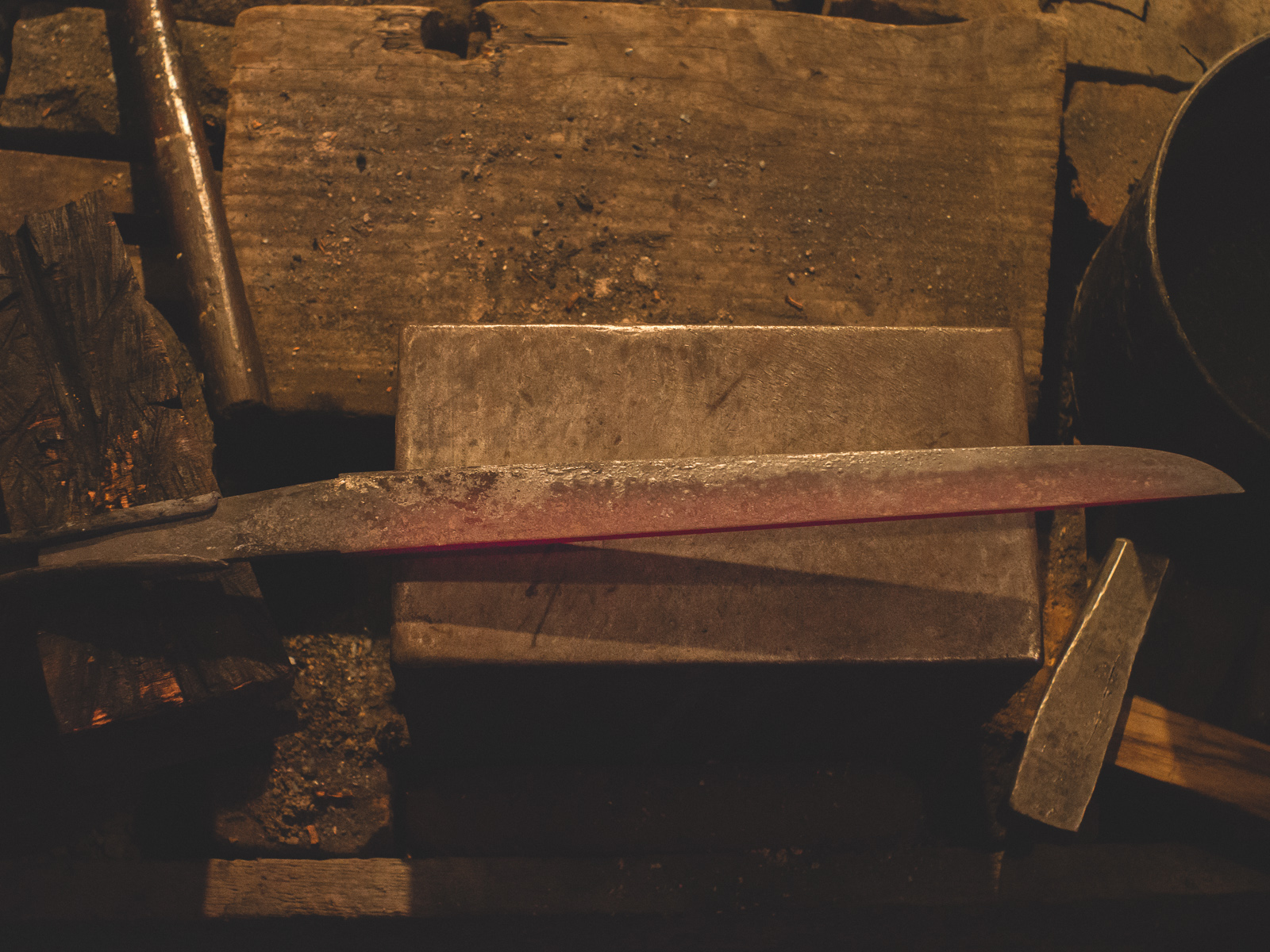
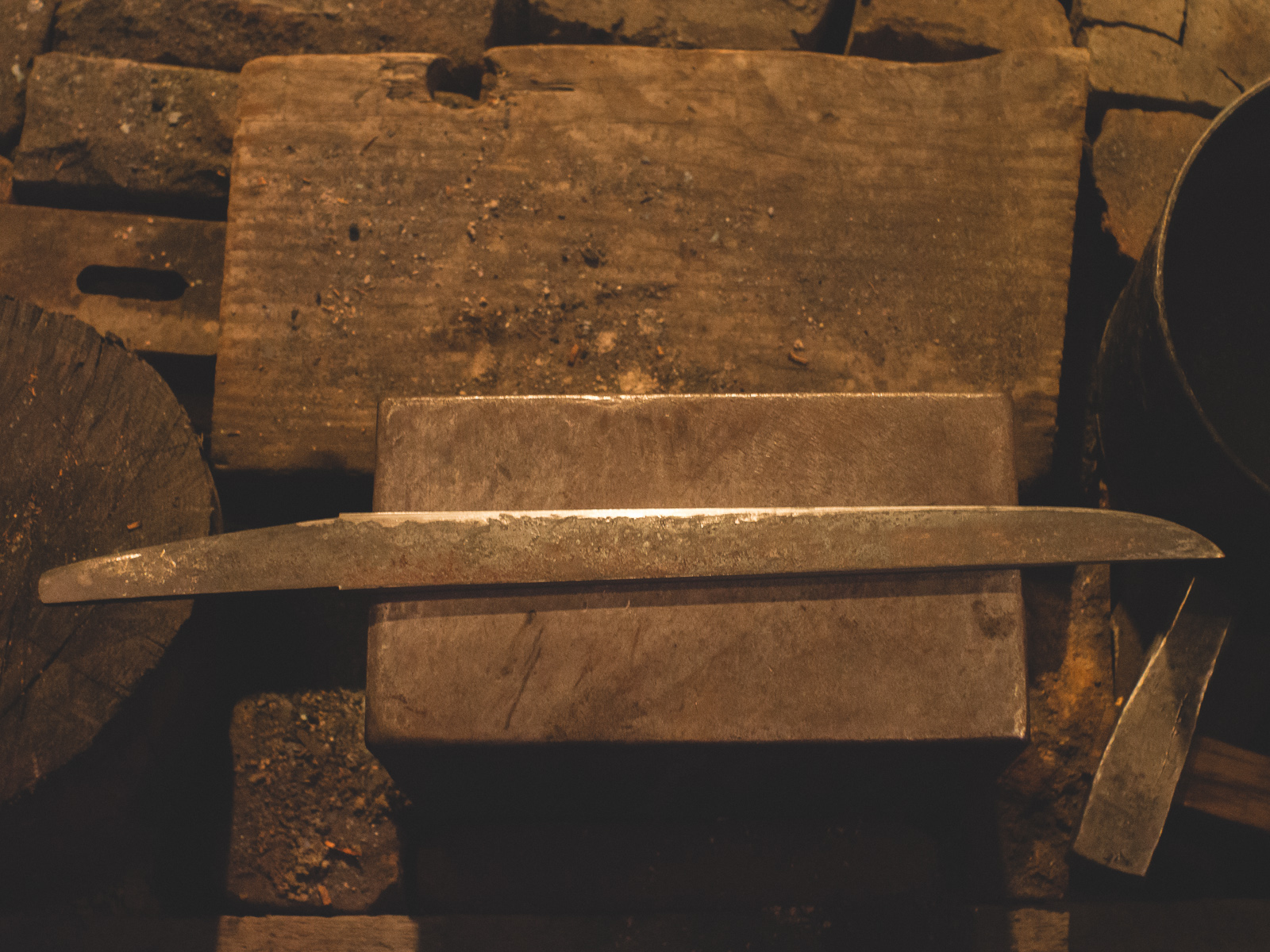
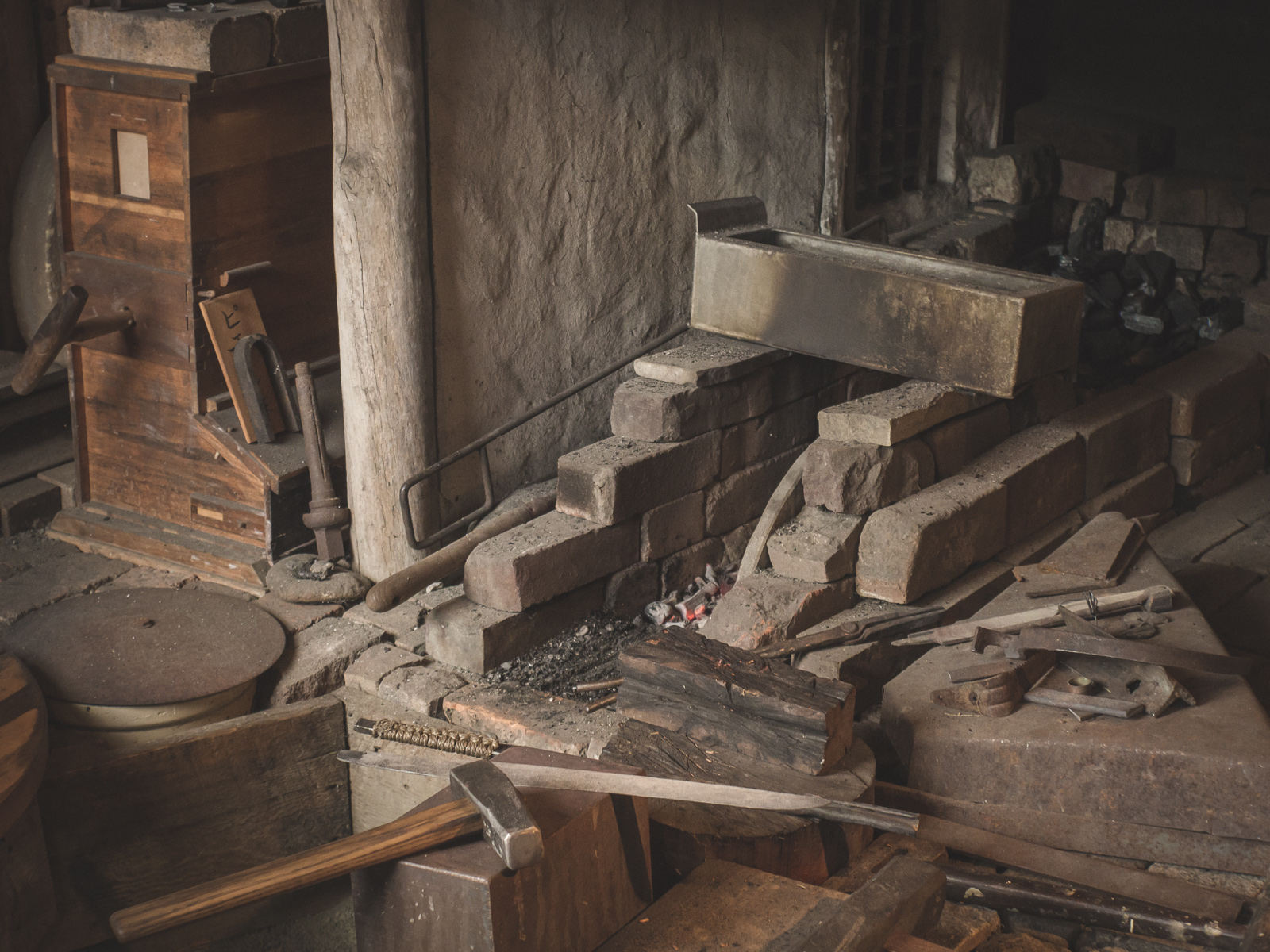
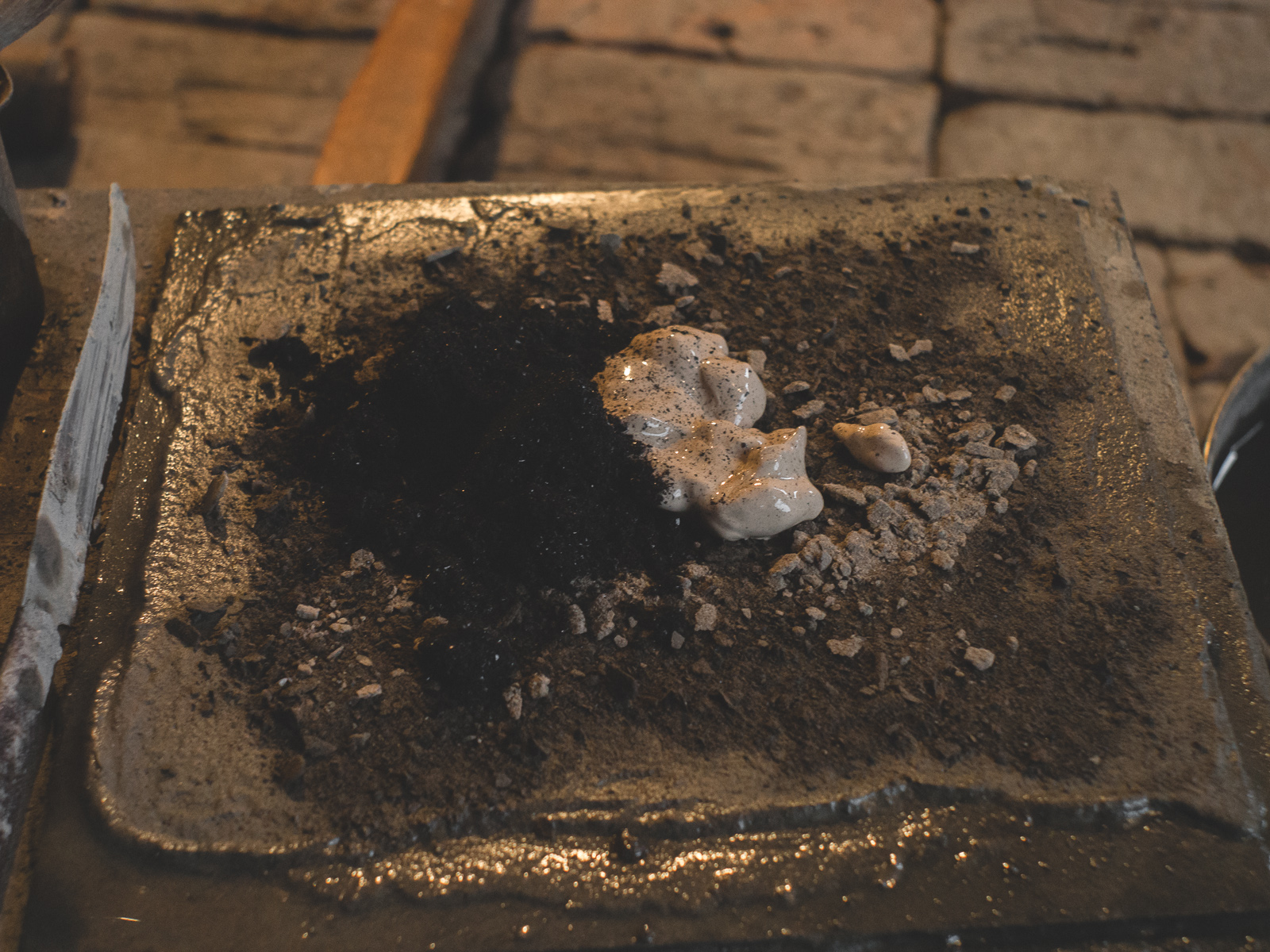
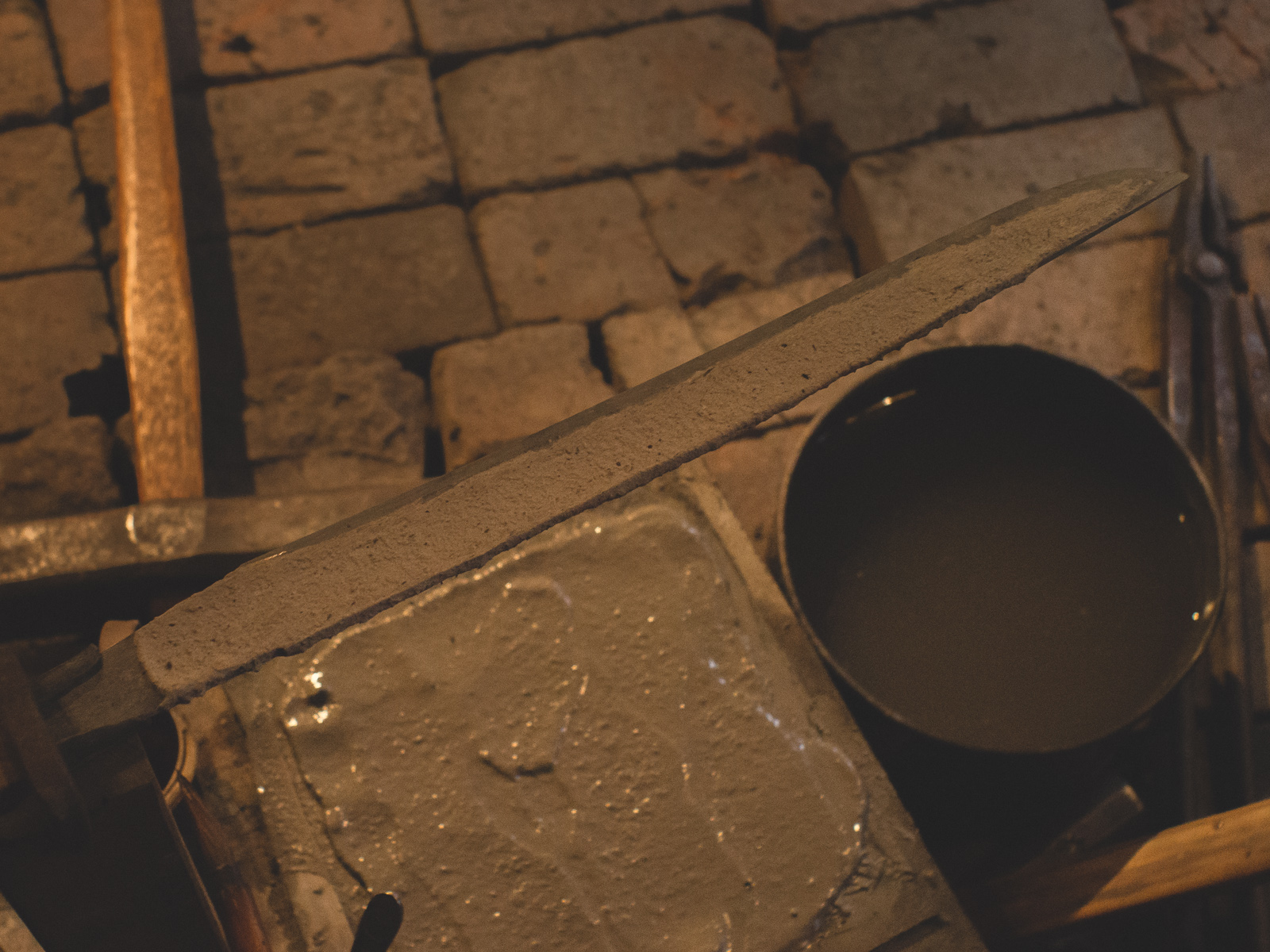
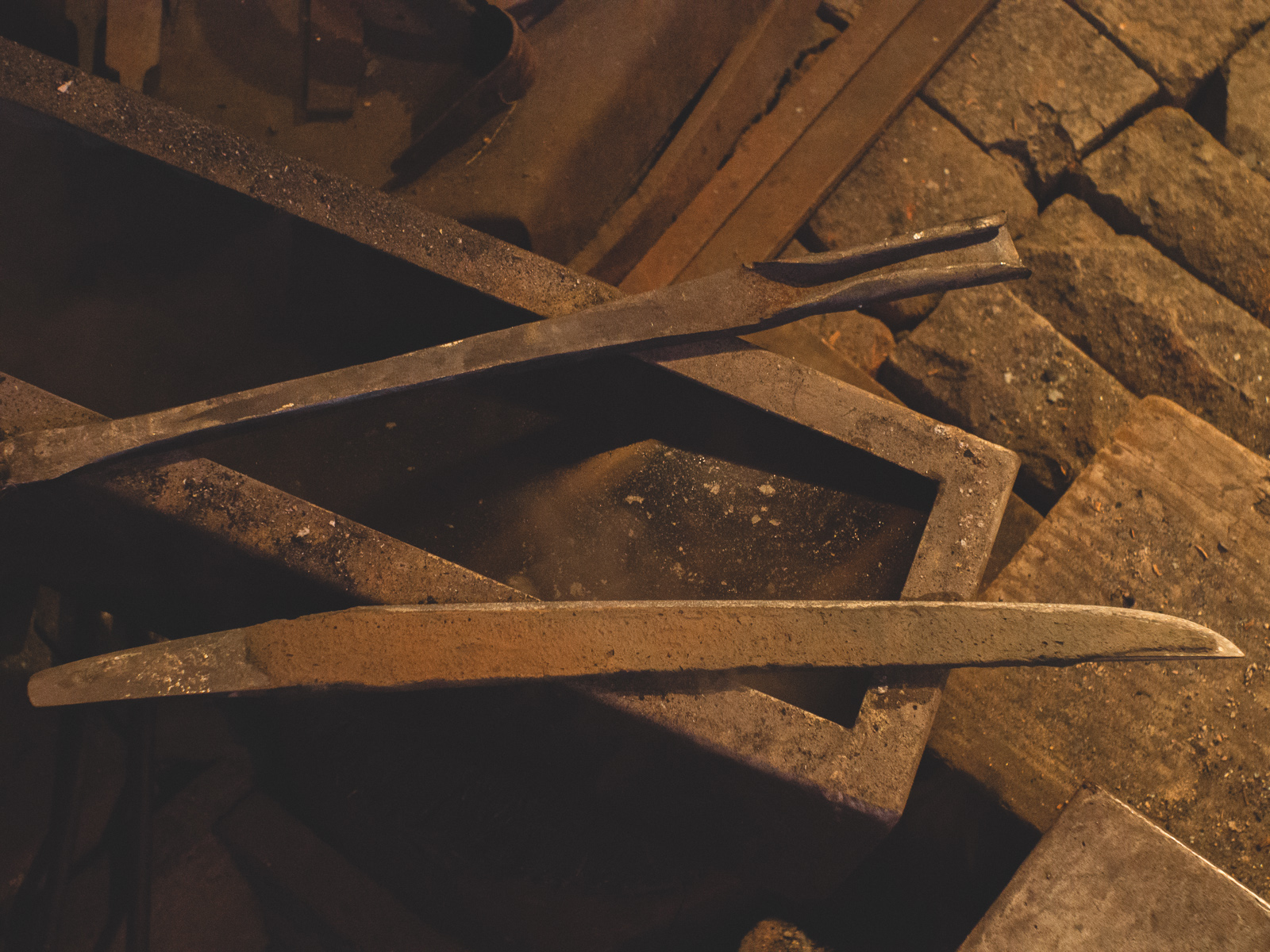
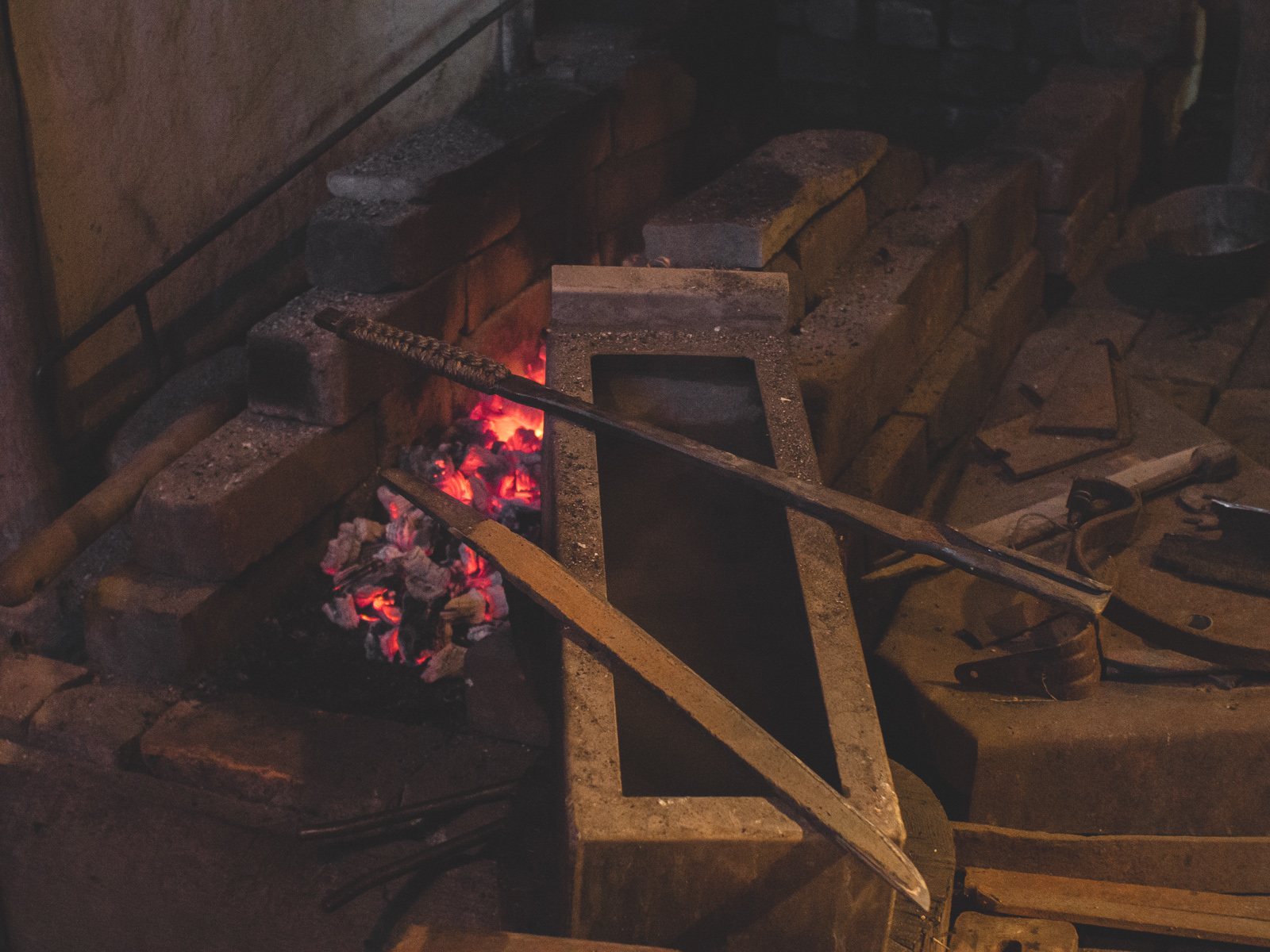
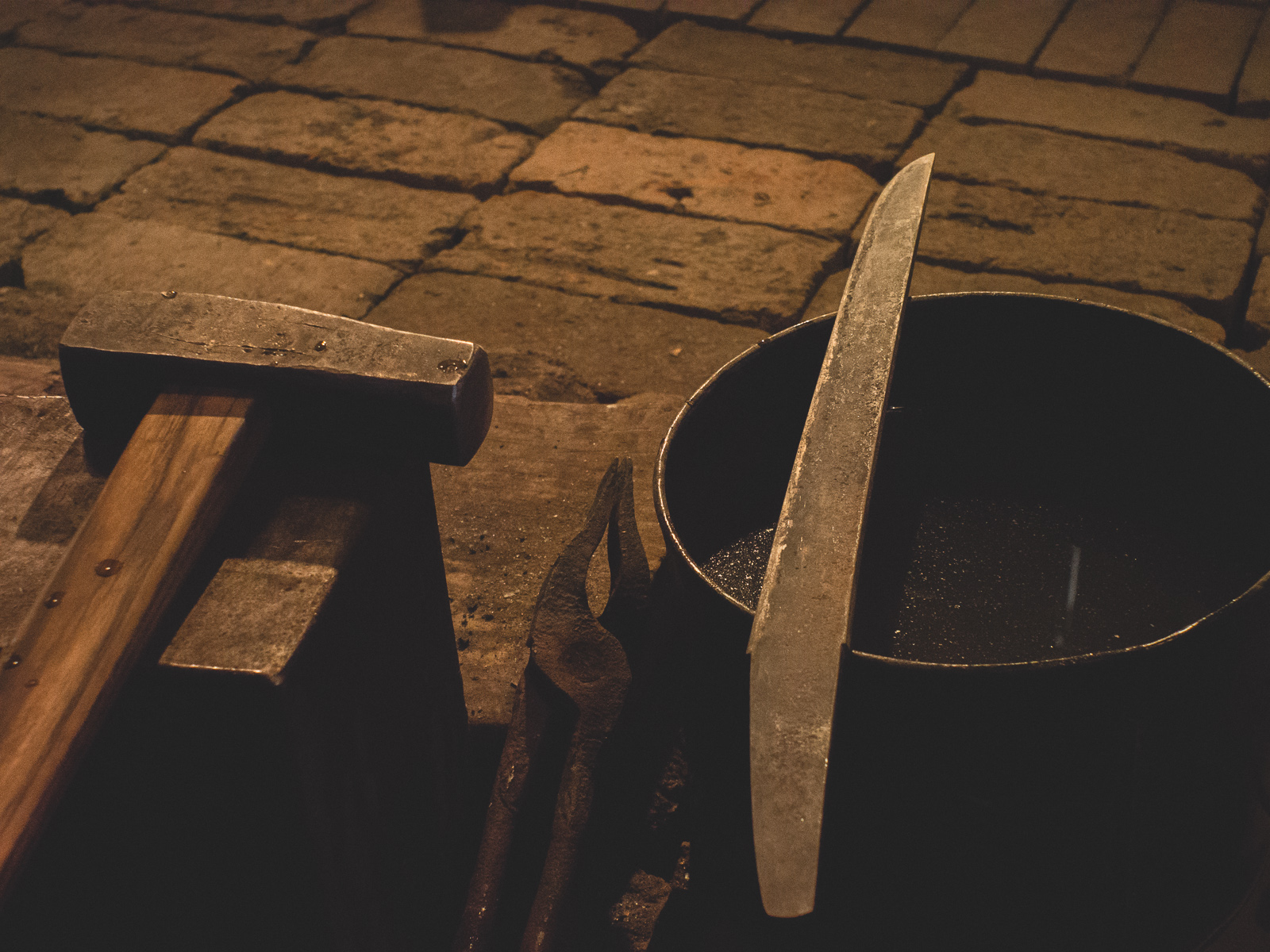
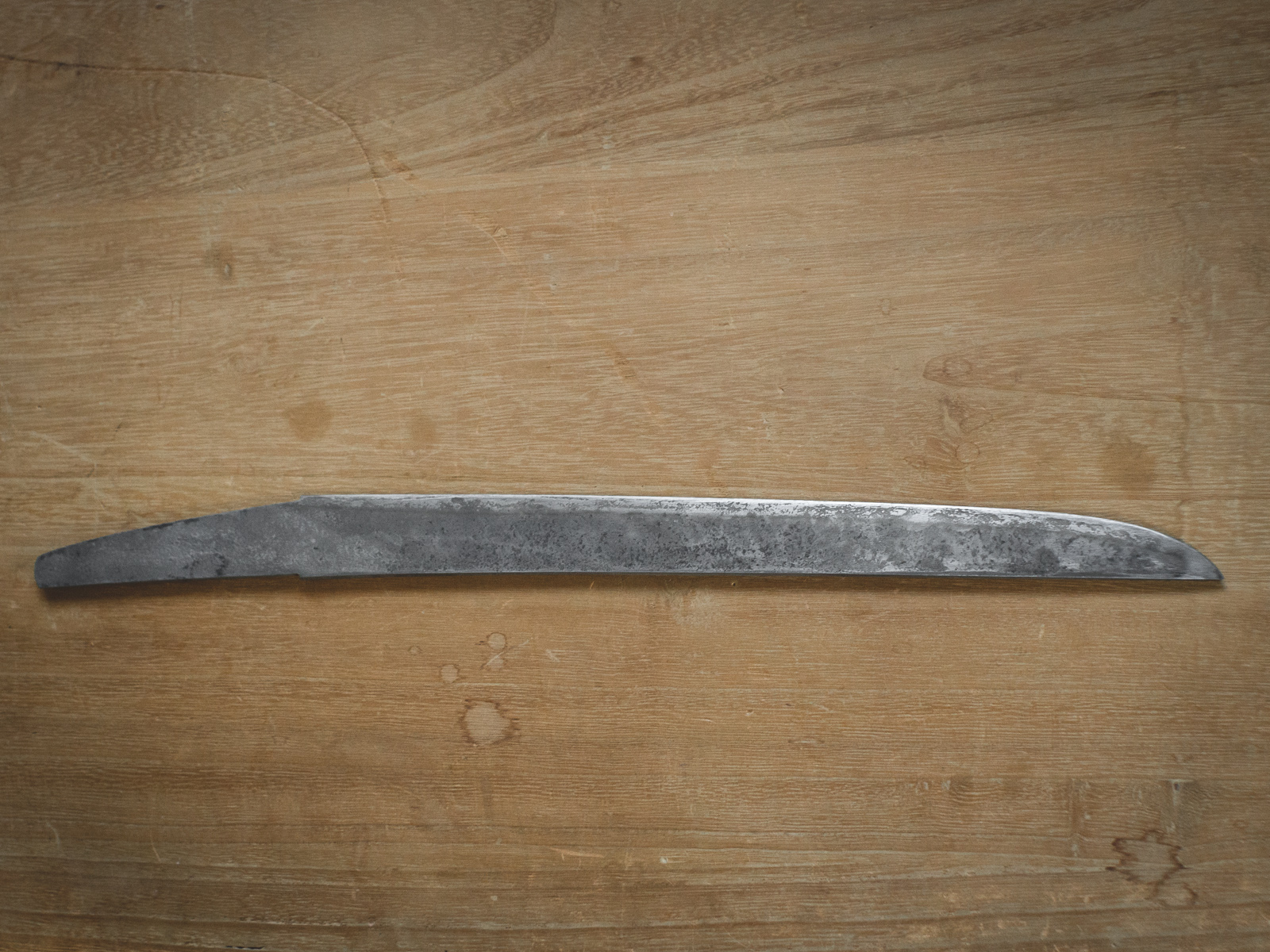
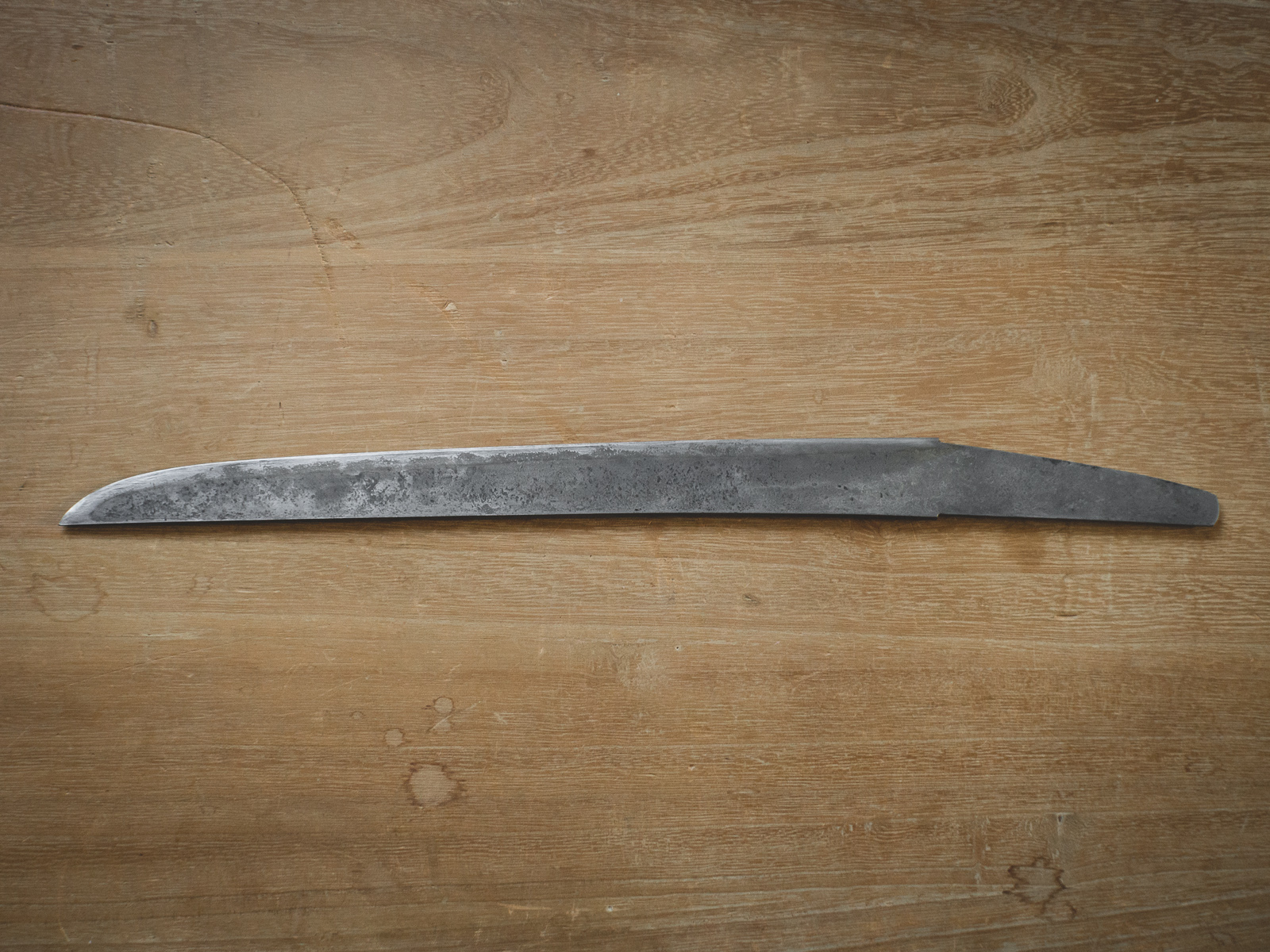
**Please note that in order to preserve the patina and texture of the antique components involved in this mounting there may be minor damage, scuffs, variations in colour, and other indications of their stories over the centuries.




